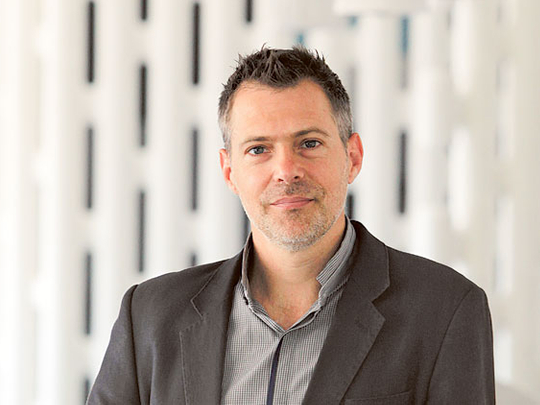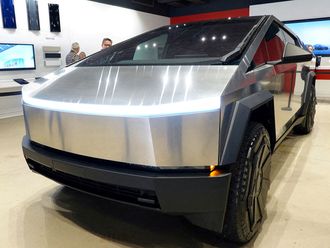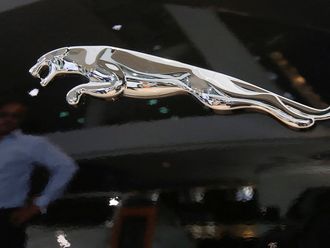
What is the business of Blue Beetle?
We are a website design and digital communication company that specialises in the creation of online business solutions that are simple, intuitive and functional. We are ‘digital information architects’.
How did Blue Beetle start?
The ‘push’ into entrepreneurship happened after an ‘unpleasant’ job experience in Dubai. The seeds of entrepreneurship were latent in me. I always wanted to work for myself. I recall two influences - a vivid childhood memory of my dad, telling me ‘you’ll never make any money unless you work for yourself,’ and my love for web design.
I didn’t feel like I was an entrepreneur when I decided to give business a shot. I had noticed a gap. Basic web design is easy. There were a lot of companies doing ordinary websites. I didn’t see many high-quality websites. I realized that companies were not taking advantage of the potential of websites and digital communication. I came from an industrial design background. I was not an IT person wanting to do websites. I set out to design good websites and harness the potential of IT. I knew that to do a website that serves a strategic purpose requires a diversity of skills, experience, knowledge, and hard work.
I started from a cubicle in the business centre in Dubai Media City. I initially did everything, from coding to designing. Slowly the assignments started to become more complex. I am not a programmer, so the first person I hired was a programmer; Blue Beetle had become a two man company. About four years ago I decided to take business seriously and establish Blue Beetle as a more solid company. By then we had gained a reputation in the market for our work. Some of the assignments that we were getting required additional resources and skillsets. I got an office in Dubai Studio City. Over the last four years we have grown steadily and had to move again. At the end of last year we moved into an even bigger office in JLT.
Was customer acquisition easy?
Customer acquisition was easier when I started. I did not make any cold calls. My first job was for Sharjah Airport Duty Free. It was a small job. I worked hard to impress the client. I think they were impressed, since they referred me on to other jobs.
How was your initial pricing?
When I started I was alone and flexible, and willing to negotiate price. My overhead was low and I didn’t need a great number of projects to keep me going. Today it is more structured because we need several projects a month to keep the business going.
Do clients give jobs to Mark the designer or to Blue Beetle the company?
For the first few years it was definitely me as I was always the one meeting them and doing the work. They were hiring me, even though I branded the company as Blue Beetle from day one. People knew me as Blue Beetle.
Have you ever walked away from a client?
Yes, we have walked away. We have learnt to say no. I have learnt to recognise clients we should not work with. There are some clients who we have mutual respect for and there are some we have had bad experiences with. Being able to recognise that before you get too far down the line is good.
Is a client who will make you compromise on your creativity not a good client?
Yes. If a client is too cost driven and expects the work to be delivered in an unreasonable time frame, we know that we will not be able to deliver quality and we generally take a decision to bow out.
Important learning in the development of Blue Beetle?
I learned to develop long term relationships with clients. We had two clients from the early days and did a lot of recurring work for them. We worked hard to impress them each time we worked with them. We realized that companies always have work that needs to be done and building ongoing relationships is important for our business. I also realized the importance of credibility. What set us apart was a simple thing; we did what we said we would do.
How did you go about building the company Blue Beetle?
In the beginning I was deeply involved in the production of all the websites. I recognized that even though I was good at what I did, and was getting clients, there were better people out there who were more specialized than I was. My second employee was a designer. I passed on all design work to him and moved onto the business side of things while still doing some front-end development. I maintained my responsibility for the front-end work until I hired a person who was again better than me. My aim was to completely remove myself from production. This is where I am today. I’ve even gone as far as removing myself from business development. I am now involved in business strategy and organization systemisation.
If I was joining you three years ago, how would you sell your company to me?
I would be completely honest and explain the situation. And then I would ask you if you are willing to jump into the deep end with me. This is what I did with my second team member. He came from a big agency background. He had to believe in my dream and trust me. I explained to him why it was a good time to join; he could grow from start, be involved in a company focused on quality and have an opportunity to effect the direction of the company.
Manoj: Has creating a compensation package to attract talent been an issue?
Mark: Recruitment has been a steep learning curve. Mistakes have been made. To attract good people the company needs to be of a certain size and caliber. This is a chicken and egg problem; you need good people to do good work and they attract other good people. It is risky to take on more overheads. Ninety percent of our overhead is salary. I do it incrementally.
What is the future growth trajectory of Blue Beetle?
The short-term strategy is to get Blue Beetle to a point where we have enough people to be able to do the work we want to do, of a quality and standard we want to deliver. Right now we are at a challenging point - we are too small, we need more work but we are very busy, so we need more people. But we need the work before we can hire people. The aim right now is to get to the stage where we are the right size. We’re now in a space that will allow us to grow.
Do you worry if you will be able to pay the salaries?
It is a worry. In this business growth is difficult to project. Sometimes there have been 2-3 months without additional business. I begin thinking, ‘Oh! My word,’ and suddenly a customer who was sitting on a proposal for 3 months comes back saying - ‘We are ready to move forward.’ And we find ourselves very busy. I have come to terms with the fluctuating up and down nature of the business now. Now I don’t worry when it is quiet. I used to worry. I know something will come through. It always does.
What is your investment in Blue Beetle?
The starting capital requirement for the trade license was Dirhams 50,000. That is all that I had. Four years ago when I decided to take the plunge, scale up and grow, I actually had a million Dirhams saved in the company account after three years of operation.
Have you changed as a person on this entrepreneurial journey?
I wouldn’t say I have changed in personality, but I have learnt and developed a lot.
I was a web designer who was suddenly in charge of a company and people. I was unconsciously making a transition from a technical ‘doer’ to a managerial ‘entrepreneurial’ position. Business was not my background. I never thought that I would start doing this kind of a thing. I do miss designing and coding, and yet I couldn’t go back. This is what I want to do now. It was a lot for me to learn and do, and let go of what I was doing before.
I still have a lot to learn. I am by no means a great manager or entrepreneur yet. I know a lot more now than I did four years ago. I am learning all the time - how to hire people, what to look for, what not to do, and how not to react to right away, take a breather in a situation. The most important learning has been to focus on solutions and not worry about what is going to happen. One can worry as much as one wants, but that is not going to change anything. It is better to focus on solutions and as long as one does it on a daily basis and works hard, it is a good place to be.
What is an important piece of advice you would give to an entrepreneur?
Go for it.
Where you sure from the first day that the business would work?
I have to admit I was pretty sure. Even if it does fail, you keep on going. You learn from what happens, and push on. There is no real failure unless of course you give up.
This thinking - “Don’t keep thinking about what ifs. Go for it. Define small problems and keep solving them one step at a time.” Has this been your mantra?
This is something relatively new. I am a workaholic, worry too much and it stresses me out. I am beginning to realize that there is no point in doing that. You have to have faith and believe in yourself. Rather than putting energy into worrying it is better to focus on solutions.
What worries you about business?
Whether we will get enough work and getting it done to the highest standard.
Do you see a change in your business model going forward?
There are things in terms of what we deliver that we need to improve. A project lifecycle has three stages – beginning, middle and end.
The middle of the project - design and development - we do very well. We need to improve the beginning and the end. The beginning is about strategy – determining business objectives, identifying what the client trying to achieve, and the research that goes into analysing competitors, current website and so on. We are putting more focus on this. The end of the project is about maintenance and evolution of the website. There are business opportunities here as well. We are working to a point where after delivering the website, we have an ongoing relationship with the client to support and develop their website as their business grows and evolves.












